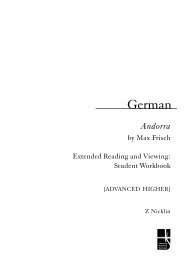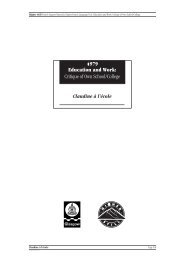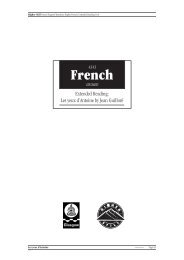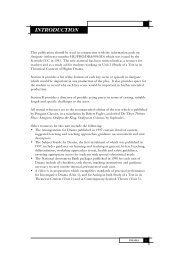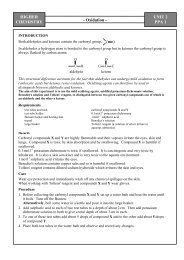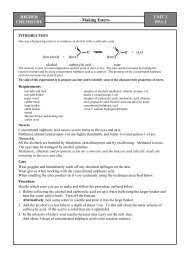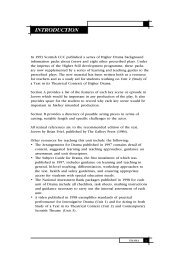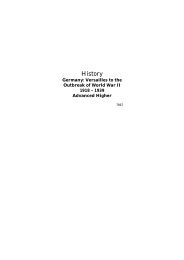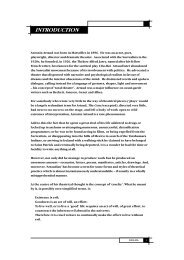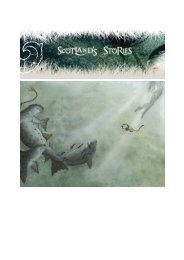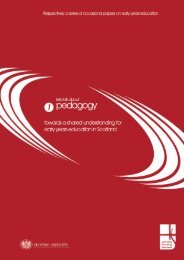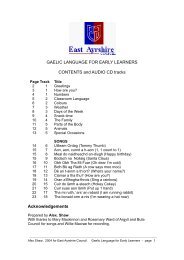RMPS - Int2/Higher - World Religions - Judaism - Education Scotland
RMPS - Int2/Higher - World Religions - Judaism - Education Scotland
RMPS - Int2/Higher - World Religions - Judaism - Education Scotland
You also want an ePaper? Increase the reach of your titles
YUMPU automatically turns print PDFs into web optimized ePapers that Google loves.
THE GOALS<br />
The meaning of obedience to God: ritual observance, Part 2<br />
Kashrut<br />
The term ‘kosher’ means ‘fitting’ or ‘correct’. The word is usually used<br />
to describe foods that are made in accordance with Jewish law. This<br />
leads to the term kashrut which is the body of Jewish laws that deals<br />
with foods that Jews can and cannot eat and how those foods must be<br />
prepared and eaten. The laws of kashrut are found mainly in Leviticus;<br />
they were among the mitzvot given to the Jews during the period of<br />
wandering in the desert.<br />
However, the term ‘kosher’ may also be used for religious objects. For<br />
example, for a mezuzah to be kosher, it must be written by a trained<br />
scribe on parchment. This parchment must be made from the skin of a<br />
kosher animal. Once finished carefully writing, the scribe will give it to<br />
another qualified scribe to check. A mezuzah with mistakes or printed<br />
on paper treated to look like parchment is not kosher.<br />
All plants are kosher, but not all birds, animals or fish. For an animal to<br />
be kosher it must have cloven (split) hooves and must chew the cud,<br />
that is, it is a ruminant. Cows, sheep, goats and deer have these features<br />
and are therefore kosher. Pigs are not kosher, since although they have<br />
split hooves they do not chew the cud. On the other hand, a camel is<br />
not kosher because although it chews the cud it does not have a<br />
completely cloven hoof. Birds are kosher if they are not birds of prey.<br />
There is a long list of birds that are not kosher in the Torah (Leviticus<br />
11: 13–19). Kosher fish can be recognised by two features. They must<br />
have fins and scales. This means that seafood is forbidden since, for<br />
example, eels do not have scales, and lobsters or prawns do not have<br />
fins or scales. The wide range of fish that Jews are allowed to eat<br />
includes plaice, salmon and haddock amongst many others.<br />
Food that is not kosher is known as treif (pronounced tray-f).<br />
Kosher animals and birds must be killed according to the method of<br />
shechitah. This method has been proven to be a humane way of killing<br />
animals; the cutting involves the least amount of pain because the<br />
animal loses consciousness immediately. Causing pain to any living<br />
creature is strictly forbidden in Jewish law. Any animal or bird that is<br />
killed by another method is not kosher. Carrying out shechitah requires<br />
a great deal of training and is a very responsible job. This person has to<br />
be deeply religious and has to have passed an examination on shechitah.<br />
<strong>RMPS</strong>: WORLD RELIGIONS – JUDAISM (INT 2, H) 33<br />
© Learning and Teaching <strong>Scotland</strong>



